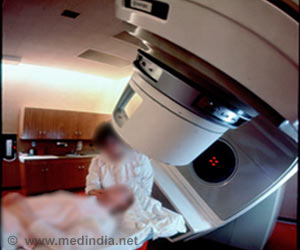Powerful handheld device to detect cancer rapidly and accurately during surgery developed, helping precise treatment delivery and lesser chances of recurrence.
Highlights:
- For many cancers, one of the main forms of treatment is surgery; however, even if a small margin of cancer tissue is left behind, there is bound to be recurrence
- New potent tool developed, that can identify cancer tissue accurately and rapidly during surgery, thereby enabling surgeons to remove cancer tissue more precisely with reduced chances of a recurrence
Per-operative Rapid Diagnosis Of Cancer – Critical To Improve Patient Outcome
Currently, surgeons employ frozen section analysis of excised tissue to get a quick diagnosis of cancer and to check for completeness of tumor removal so that cancer does not recur. At the same time, overzealous surgery with removal of normal tissue in excess can have undesirable effects. For example, there is a higher risk of painful side effects and nerve damage, not to mention the aesthetic impacts in breast cancer patients. Similarly, patients with thyroid cancer may lose speech (due to nerve damage) and ability to maintain normal serum calcium levels with serious consequences.Frozen section analysis requires the tissue to be taken to the Histopathology Lab where the tissue has to be processed and stained by experienced technical staff. The stained tissue should then be interpreted by a skilled pathologist.
On an average this takes about 30 minutes (while the patient is still under anesthesia) while the surgeons wait for the report to decide whether further surgery may be necessary. In addition, the frozen section diagnosis is inaccurate in approximately 10-20 percent of the cases and interpretation is not always easy.
To overcome these pitfalls, the current team hoped to develop a tool that would rapidly and accurately identify cancer tissue during surgery. To this end they invented and tested the MasSpec Pen tool. The findings of their study appear in the Sept. 6 edition of the journal Science Translational Medicine.
Testing the MasSpec Pen Tool in Patients – Findings Of the Study
- The MasSpec tool was tested on tissues removed surgically from 253 cancer patients.
- In each case, the device provided a diagnosis that was more than 96 percent accurate within 10 seconds.
- The device also correctly detected cancer in marginal areas between normal and cancer tissues that are critical to identify for precise surgery.
In the words of Livia Schiavinato Eberlin, an assistant professor of chemistry at UT Austin who designed the study and led the team, "If you talk to cancer patients after surgery, one of the first things many will say is ’I hope the surgeon got all the cancer out’. It’s just heart breaking when that’s not the case. But our technology could vastly improve the odds that surgeons really do remove every last trace of cancer during surgery."
How The MasSpec Pen Works
All living cells, whether they are healthy or cancerous, produce small molecules called metabolites that perform a wide variety of bodily functions. Every form of cancer thus produces a distinct set of metabolites and other biomarkers that behave like fingerprints."Cancer cells have dysregulated metabolism as they’re growing out of control," says Eberlin. "Because the metabolites in cancer and normal cells are so different, we extract and analyze them with the MasSpec Pen to obtain a molecular fingerprint of the tissue. What is incredible is that through this simple and gentle chemical process, the MasSpec Pen rapidly provides diagnostic molecular information without causing tissue damage."
- When the "MasSpec Pen" is placed on the suspect tissue, a drop of water is released which absorbs the cancer biomarkers that may be present in the tissue.
- The biomarker molecules are then fed into a much larger machine called a mass spectrometer which analyzes the molecules and detects the presence of cancer.
- The team tested the pen on 253 human tissue samples of breast, lung, ovarian and thyroid cancer, as well as healthy tissue. The pen was found to be accurate 96 percent of the time.
- The MasSpec Pen was also tested while operating on mice with tumors, and it was seen that the device did not damage the tissue or harm the animals.
- Once the MasSpec Pen completes the testing, the words "Normal" or "Cancer" automatically appear on a computer screen. In some cases, such as lung cancer, the name of the cancer subtype might also appear.
Scope of the Study and Future Plans
- The study offers a simple and accurate method that can be easily operated by surgeons to detect cancer in patients during surgery.
- It is a non-invasive procedure and safe for the patients as well.
- More tissue samples obtained during actual surgeries in clinical trials have to be tested. It also needs the US Food and Drug Administration approval.
- The team hope to begin testing this new technology during cancer surgeries in 2018.
- The current analyzer is bulky and takes up a lot of space, but the team is working on a smaller model.
Reference:
- J. Zhang, J. Rector, J. Q. Lin, J. H. Young, M. Sans, N. Katta, N. Giese, W. Yu, C. Nagi, J. Suliburk, J. Liu, A. Bensussan, R. J. DeHoog, K. Y. Garza, B. Ludolph, A. G. Sorace, A. Syed, A. Zahedivash, T. E. Milner, L. S. Eberlin, Nondestructive tissue analysis for ex vivo and in vivo cancer diagnosis using a handheld mass spectrometry system. Sci. Transl. Med. 9, eaan3968 (2017).
Source-Medindia











